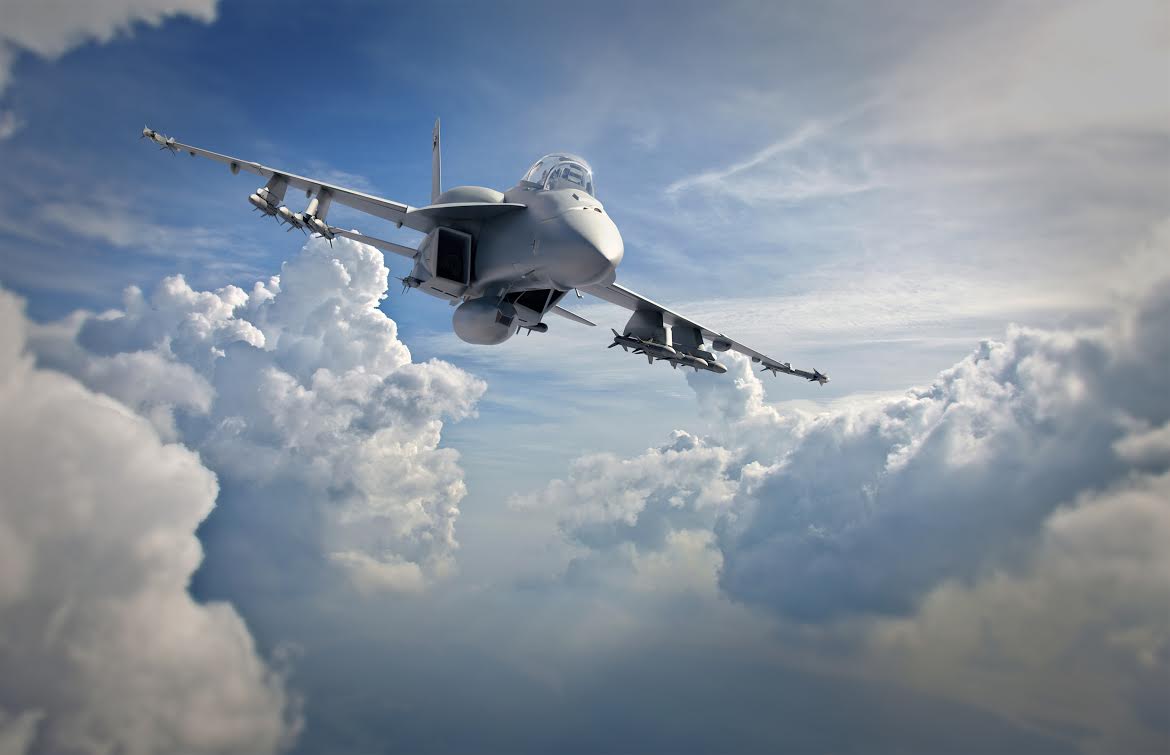
An artist’s concept of a F/A-18E Block III. Boeing Image
ARLINGTON, Va. — They will be a little bit stealthier, pack a more powerful punch, fly with increased stamina and carry a more robust communication and targeting systems. That’s how Boeing officials talked up the benefits of the Block III F/A-18E/F Super Hornets as they prepare to start rolling off the production line next year.
In 2013 Boeing developed a plan that would make the Super Hornet 50-percent stealthier than its already-low-radar signature design, Boeing’s F-18 program manager Dan Gillian told reporters on Wednesday. But the Navy reportedly balked at the plan, explaining they don’t need Super Hornets to be extremely low observable – the Lockheed Martin F-35 Lighting II Joint Strike Fighter accomplishes that – but rather they need an F-18 to stay on station longer, deliver more weapons and be better integrated into the Naval Integrated Fire Control-Counter Air (NIFC-CA) system, Gillian said.
“The Navy’s carrier air wing doesn’t need us to be at F-35 level of stealth to perform the missions the carrier air wing has to do,” Gillian said.
“They need us to improve our radar cross section and they need us to carry large amounts of ordinance far forward.”
The end result, according to Boeing, is that the Block III Super Hornets are only slightly stealthier than Block II fighters but will have greater range and the ability to carry more weapons on a more robust airframe designed to last up to 9,000 flight hours – about a decade longer than the current airframes. The jets will also have far superior data processing and communications capabilities than previous versions.
Boeing already is working on updating its first Block II Super Hornets, and the Navy has requested funding for new-build Block III planes starting in Fiscal Year 2019. Gillian said the first new-construction planes would deliver in early 2021.
Within six years from now, half the total Super Hornet inventory will be the Block III planes, Gillian said. Within a decade, the entire Super Hornet fleet assigned to carrier air wings – about 480 aircraft – will be Block III jets. This includes 116 new-build Super Hornets and modernizing about 364 Block II airframes. The Navy will retain about 100 Block I Super Hornets for training purposes.
Boeing focused its Block III development on outfitting Super Hornets with an Advanced Network Infrastructure, using systems already part of the Boeing EA-18G Growler electronic warfare aircraft, Gillian said. Block III Super Hornets will have the Distributed Targeting Processor Network (DTP-N), which is 17-times more powerful than the previous systems. Block III Super Hornets are also getting the Tactical Targeting Networking Technology (TTNT) data link and satellite communications for advanced network connectivity.
The improved networking onboard Block III Super Hornets, though, still doesn’t address a vexing problem for the Navy’s future air wing – finding a way for F-35 jets to communicate with other platforms without losing their stealth. Boeing officials conceded they’re still working on a solution but would not elaborate.
Perhaps the most visible change to the jets is the location of fuel tanks on Block III Super Hornets. Instead of carrying external drop-tanks as previous versions did, the Block III Super Hornets will have conformal fuel tanks installed behind the cockpit on the jet’s shoulders. These hold slightly less fuel, but because they are lighter and make the jet more aerodynamic the end result is an increased range of about 129 nautical miles, Gillian said.
More importantly to the pilots, the new fuel tanks will allow the Super Hornets to remain on station longer and carry more weapons, Capt. Dave Kindley, the Navy’s F/A-18 and EA-18G program manager, said.
“As an operator, there is some interest in range, but there’s fascination with time. If I can get 100 miles farther, that’s awesome. But if I can stay in the air and support someone on the ground for 20 minutes or 30 minutes more, that’s much, much more interesting to us,” Kindley said.
